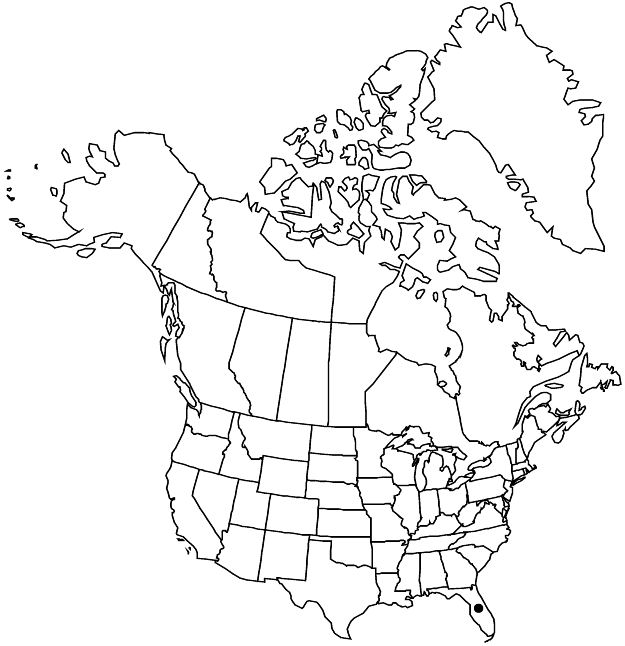Heteropterys brachiata
Prodr. 1: 591. 1824.
IntroducedIllustrated
Basionym: Banisteria brachiata Linnaeus Sp. Pl. 1: 428. 1753
Synonyms: H. beecheyana A. Jussieu
Treatment appears in FNA Volume 12. Treatment on page 361.
Leaf-blades elliptic, larger blades 4–8.5 (–9.5) × (2–) 3–6 (–7) cm, base cuneate or rounded, apex rounded or slightly emarginate, obtuse, or acute and often apiculate, abaxial surface moderately to densely and usually persistently tomentose, occasionally tardily glabrescent, adaxial surface tomentose to glabrate, bearing 1–4 pairs of peltate glands abaxially near base and occasionally 1–2 additional pairs distally. Inflorescences: umbels or corymbs (2–) 3–6-flowered. Samaras 18–32 mm; nut 3–4 mm diam., winglets 1–3.5 mm high.
Phenology: Flowering and fruiting Nov–Dec.
Habitat: Hammocks.
Elevation: 0–10 m.
Distribution
Loading map...

Introduced; Fla., s Mexico, Central America, w South America
Discussion
Heteropterys brachiata is cultivated as an ornamental and locally naturalized in southernmost Florida.
Selected References
None.
Lower Taxa
None.
... more about "Heteropterys brachiata"
glabrescent;tomentose +
hypogynous +
dehiscing +
alike +
apiculate +
1;2 +
absent +
connate +
thin-walled +
symmetric +
- 2-3-6-flowered +
grouped +
single +
elongate +
symmetric +
showy +
chasmogamous +
splitting +
peltate +
absent +
Present +
true +
irregular +
elliptic +
simple +
opposite +
thin-walled +
absent +
tough +
thick +
thin-walled +
- 2-3-locular +
apical +
superior +
anatropous +
hypogynous +
visible +
glabrous +
absent +
3-carpellate +
distinct +
clawed +
Prodr. +
1824 +
thickened +
18mm;32mm +
eglandular +
longitudinal +
visible +
fertile +
1;3 +
large +
distinct +
absent +
distinct +
cylindric +
Heteropterys brachiata +
Heteropterys +
species +
- 2-3-6-flowered +
grouped +
bending +
synoecious +
woody +
